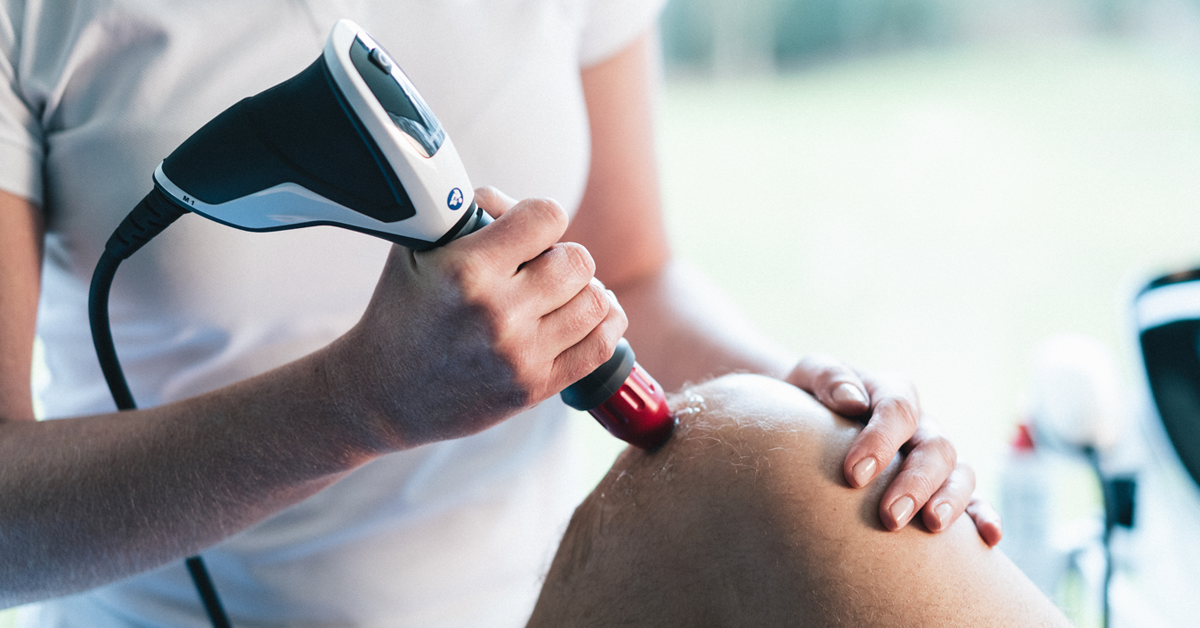For patients recovering from total knee arthroplasty (TKA), managing post-surgical pain and stiffness can present significant challenges. Radial Pressure Wave (RPW) therapy can offer a valuable treatment option, delivering targeted acoustic energy to support the healing process.
What makes Radial Pressure Wave therapy work?
RPW therapy harnesses mechanical pressure waves to encourage natural tissue repair through mechanotransduction. The process involves:
- Compressed air propelling a metal pellet
- Energy transfer through a specialized transducer
- Delivery via a treatment tip into tissue
- Radial energy distribution that gradually diminishes with depth
Customizable treatment parameters
Practitioners can adjust several variables on their RPW device to optimize treatment:
- Pressure settings from 1-5 bars (Chattanooga® devices)
- Multiple applicator options (plastic, steel, titanium)
- Treatment depth capability up to 6cm with titanium applicators
Clinical experience: total knee arthroplasty patient outcomes
Physical therapist and researcher David Levine shared findings from a recent case during an Enovis™ educational webinar:
Patient Background:
- Active male, middle-aged
- Two months post-surgery
- Primary concerns: lateral IT band pain, limited knee flexion
Treatment Outcomes:
- Three RPW sessions completed
- Enhanced range of motion noted quickly
- Pain reduction began within days
- Sustained improvement following initial response
RPW treatment guidelines for total knee arthroplasty patients
Key considerations include:
- Avoiding direct treatment over metal implants
- Modifying settings based on proximity to bone
- Maintaining patient comfort (target: 6/10 discomfort level)
- Expecting initial discomfort to subside within 2 minutes
Benefits observed
Patients may experience:
- Relief from soft tissue discomfort
- Reduced muscle pain
- Enhanced circulation
The featured patient reported:
- Marked pain reduction, particularly in IT band area
- Extended relief compared to alternative treatments
- Improved mobility
RPW therapy demonstrates significant potential for addressing post-TKA challenges, particularly in managing pain and mobility restrictions. This treatment approach may help patients achieve their recovery goals more efficiently.
To learn more about Radial Pressure Wave devices from Enovis, visit chattanoogarehab.com









